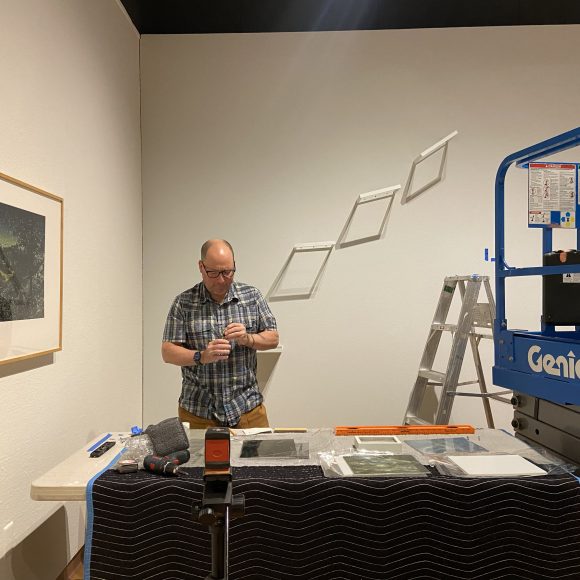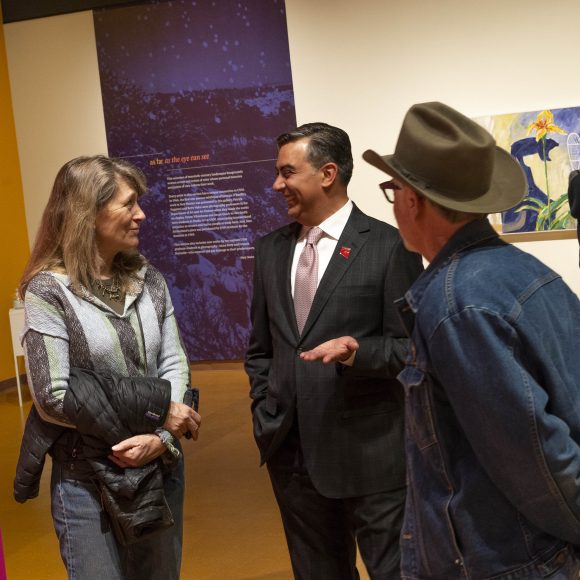Hindsight Insight 2.0: Portraits, Landscapes, and Abstraction from the UNM Art Museum is a hybrid project space and exhibition devoted to complicating existing narratives about racism, decolonization, and gender stereotypes within museum collections while de-centering curatorial authority and institutional voice. Created and curated by museum staff and collaborators, the exhibition features over 60 portraits, landscapes, and abstract artworks from the UNM Art Museum collection.
The intention behind Hindsight Insight 2.0 is to honor and engage student perspectives, interests, and concerns to make art relevant and alive for UNMAM’s core audience. Over the next two years of this ongoing experimental project, museum staff will engage the university community to generate critical dialog that resists static presentation and fixed interpretations.
-Mary Statzer, Curator of Prints & Photographs
Hindsight Insight 2.0 is made possible by a generous grant from the Terra Foundation for American Art. The Terra Foundation for American Art, established in 1978 and having offices in Chicago and Paris, supports organizations and individuals locally and globally with the aim of fostering intercultural dialogues and encouraging transformative practices that expand narratives of American art, through the foundation’s grant program, collection, and initiatives.
Created & Curated By:

Collective Constructs is a group of visual scholars working to facilitate original research, critical thinking, and collaborative learning. Formed on Tiwa land at the University of New Mexico, Collective Constructs centers visual sovereignty and remix strategies as tools of both analysis and creative liberatory practice. In our engagement with the UNM Art Museum, we center our understanding of American Indian Curatorial Practice as work that is long-term, mutually meaningful, reciprocal, and with mentorship.
Marina Perez is a descendant of the Nahua and Huichol peoples of West Mexico. She is an interdisciplinary scholar, educator, and cultural worker specializing in community and cultural art-making practices. She earned an MA in American Indian Studies from the University of California, Los Angeles, and is currently a Ph.D. student in Art History at the University of New Mexico. Her scholarship addresses emerging themes in contemporary Native arts, archives, and oral histories.
Francis Reynolds uses photography to investigate how ideology operates through images, or how images are ideology. In his work, he resurfaces photographs from the past to examine their continuing pull on the present—whether these images were created as works of art, for commercial purposes, or as tools of control. His participation in Collective Constructs explores how landscape is a framework for understanding space, one that can foreground certain aspects of a space while rendering others unintelligible. He received his BA in English from Reed College and is an MFA candidate in studio art at the University of New Mexico.
Anna Rotty is an artist living on Tiwa land in Albuquerque where she is an MFA candidate in studio art, and visual scholar here at the University of New Mexico. She sees photography as a powerful tool to slow us down, help us pay attention, and shift perception, treating imagery of landscape as active rather than reiterating a passive gaze. Through conversations with family, with optical investigations, and by prioritizing light as material, Rotty strives for that magical feeling of lifting up a rock to see what world is living underneath. As part of Collective Constructs, Rotty finds collaboration and conversation to be critical components of art practice. Her work has been exhibited at Strata Gallery and Form & Concept in Santa Fe, and throughout the San Francisco Bay Area.
Marcella Ernest engages in collaborative work both intellectually and as practice. She is Gunflint Lake Ojibwe and an enrolled member of the Bad River Band of Lake Superior and has heritage that includes Eastern European ancestry. Her interdisciplinary practice includes creative responses to the archive, research, writing, lecture + performance, sound, and video art. She explores oral histories and family photos as sites of memory and open-ended reflections on politics of place, and the varying relationships between social art history, gender, and Indigenous land justice. Marcella holds a PhD in American Studies and is currently an Assistant Professor of Native American Art History with the Department of Art Studio, History and Education at the University of New Mexico.
Artist

Jess T. Dugan is an artist whose work explores issues of identity through photography, video, and writing. They received their MFA in Photography from Columbia College Chicago, their Master of Liberal Arts in Museum Studies from Harvard University, and their BFA in Photography from the Massachusetts College of Art and Design.
Dugan’s work has been widely exhibited and is in the permanent collections of over 50 museums, including the Smithsonian National Portrait Gallery, the International Center of Photography, the Museum of Fine Arts, Boston, the Museum of Fine Arts, Houston, the Minneapolis Institute of Art, the St. Louis Art Museum, the Museum of Contemporary Photography, and the Library of Congress.
Their monographs include Look at me like you love me (MACK, 2022), To Survive on This Shore: Photographs and Interviews with Transgender and Gender Nonconforming Older Adults (Kehrer Verlag, 2018) and Every Breath We Drew (Daylight Books, 2015).
In 2015, Dugan co- founded the Strange Fire Collective to highlight work made by women, people of color, and LGBTQ artists.
They are the recipient of a Pollock-Krasner Foundation Grant, an ICP Infinity Award, and were selected by the Obama White House as an LGBT Artist Champion of Change.
Art History PhD Candidate, The University of New Mexico
 Eleanor Kane was born and raised in Colorado Springs, Colorado. Her undergraduate degrees in Art History and Studio Art are from the University of Colorado at Boulder. She then moved to New York to earn her master’s degree in Art History from City College. In 2018, Eleanor moved to Albuquerque where she is currently pursuing her PhD in Art History at the University of New Mexico, concentrating on Spanish Colonial Art. Her dissertation explores the possibility of Novohispanic Nuns as Art Patrons. Eleanor teaches introduction to Art History courses at UNM and works at the UNM Art Museum as a Programs Assistant.
Eleanor Kane was born and raised in Colorado Springs, Colorado. Her undergraduate degrees in Art History and Studio Art are from the University of Colorado at Boulder. She then moved to New York to earn her master’s degree in Art History from City College. In 2018, Eleanor moved to Albuquerque where she is currently pursuing her PhD in Art History at the University of New Mexico, concentrating on Spanish Colonial Art. Her dissertation explores the possibility of Novohispanic Nuns as Art Patrons. Eleanor teaches introduction to Art History courses at UNM and works at the UNM Art Museum as a Programs Assistant.
When Curator Mary Statzer asked if I would be interested in collaborating on a section of Hindsight Insight 2.0, I knew right away who I wanted to elevate and emphasize: Women Artists.
Not all great artists are men, but most permanent collections give that distinct impression. The title of my curated section is “Women Depicting Women,” and all the works illustrate at least one woman. In hopes of working towards equal representation in museums, these artworks will reintroduce visitors to a selection of incredible woman artists.”
-Eleanor Kane
Curator and Educator, The University of New Mexico Art Museum

Mary Statzer is a curator and educator who is most at home in museums. Statzer grew up in a small town in Illinois. She has lived and worked in the Southwest, specifically Arizona and New Mexico, for 30 years. Statzer trained as an artist and art historian, earning a BFA in printmaking and drawing from Illinois State University, an MFA in printmaking from Arizona State University, and PhD in the theory and history of art from University of Arizona.
Photography and museums are Statzer’s scholarly specialties. She edited a book titled, The Photographic Object 1970, that was published in 2017. She is currently Curator of Prints and Photographs at University of New Mexico Art Museum, where she has organized exhibitions in all mediums of art for the past five years.
From the Collection
The UNM Art Museum’s teaching collection includes over 30,000 art objects, making it the largest collection of artworks in New Mexico. Hindsight Insight 2.0 draws on the museum’s extensive collection with revolving installations of portraits, landscapes, and abstract artwork. The exhibition also showcases recent acquisitions, including those made possible by the Acquisitions Fund for Diversity and Equity.
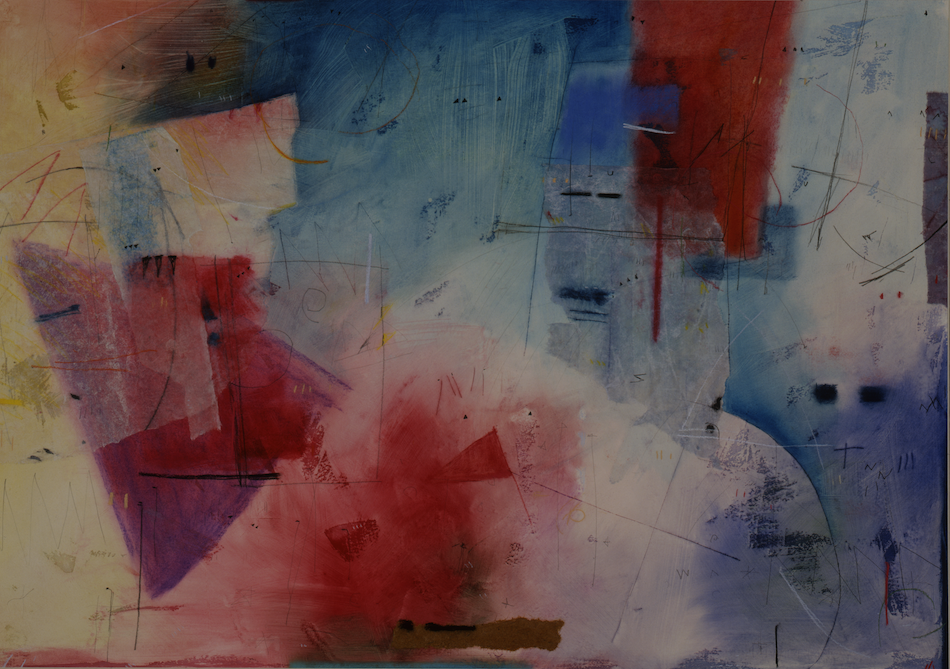
Though the art historical importance of the objects in Hindsight Insight 2.0 is noteworthy, this exhibition encourages critical thought and conversation on the role of university museums and the practice of art collecting. This exhibition asks where art objects come from, why they look the way they do and how they earned their place within the museum walls.
Hindsight Insight 2.0 is organized into thematic sections.

As Far as the Eye Can See features a selection of 20th century landscapes which foregrounds women artists and artists of color whose personal histories and unique points of view inform their work. Every artist in this section has a unique connection to the University of New Mexico. This section also includes new works by two current UNM graduate students in photography – Anna Rotty and Frank Reynolds – who respond and pay homage to their predecessors.
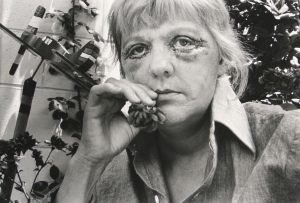
Embodied Resonance pairs the photographic portraits of Jess T. Dugan and Anne Noggle. Born generations apart, Dugan (b. 1986) and Noggle (1922-2005) share a passion for representing people from marginalized groups with unwavering honesty and deep respect. In the 1970s and 80s, when Noggle made her photographs of older women (including herself), women over 50 years old were devalued in society and practically invisible, making her depictions a radical departure from societal norms. Dugan advances that radicality for contemporary audiences, creating tender and intimate portraits of their own body and other queer and non-binary people. The photographs are accompanied by a personal text written by Dugan who describes how Noggle’s photographs have resonated for them over a ten-year period.
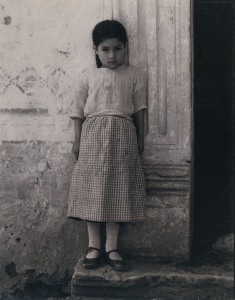
Persona: Photographic Portraits features photographs of people made outdoors in public spaces. While the settings range from urban Japan to rural Mexico, a busy street or someone’s back yard, all the subjects project a sense of self outside the protective environment of the home or studio.
Collaboration in process…
Hindsight Insight 2.0 is an ongoing process. Watch this space for new articles, upcoming events, and invitations to engage with the exhibition.
UPCOMING EVENTS:
Click here to view all upcoming events supporting Hindsight Insight 2.0.


